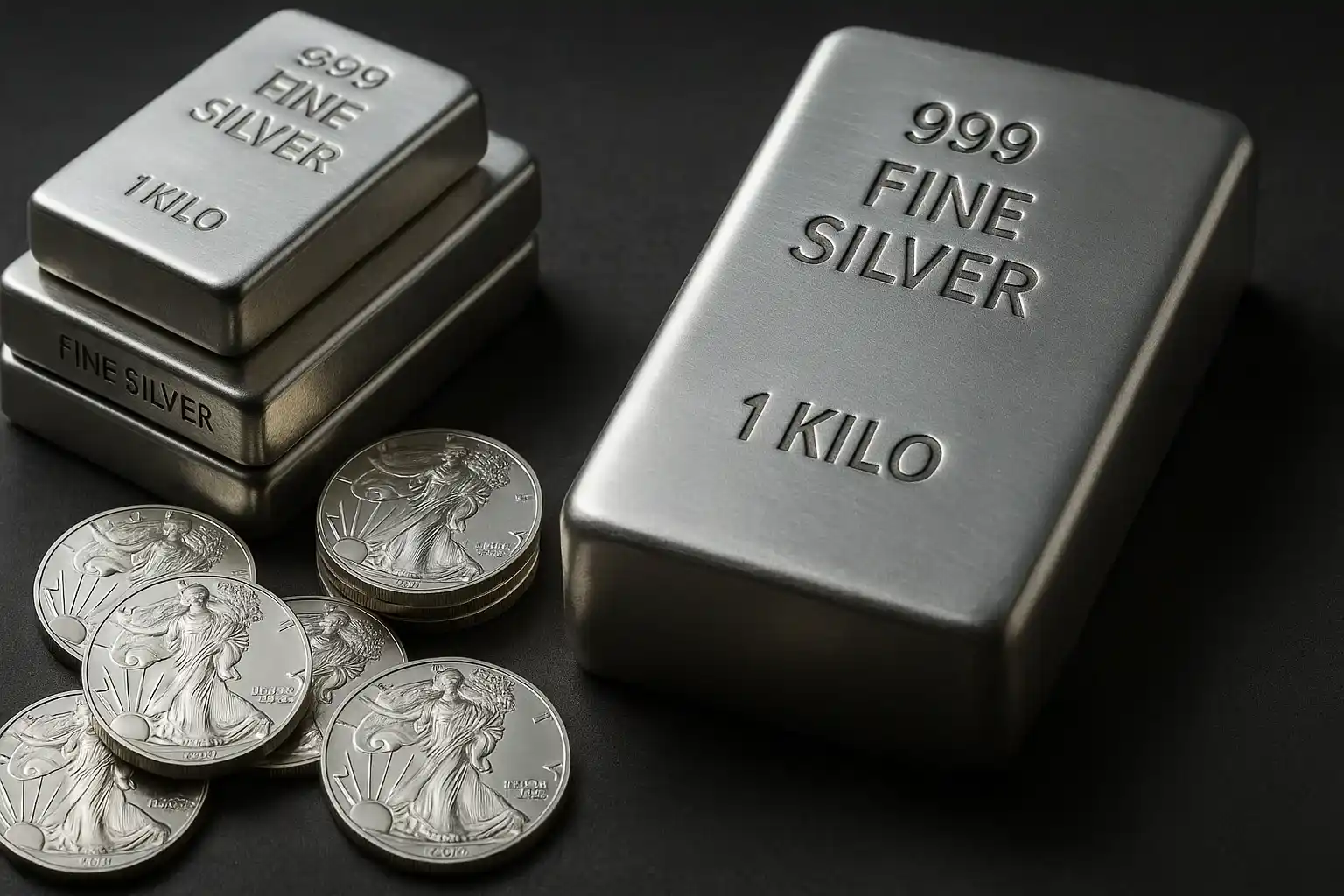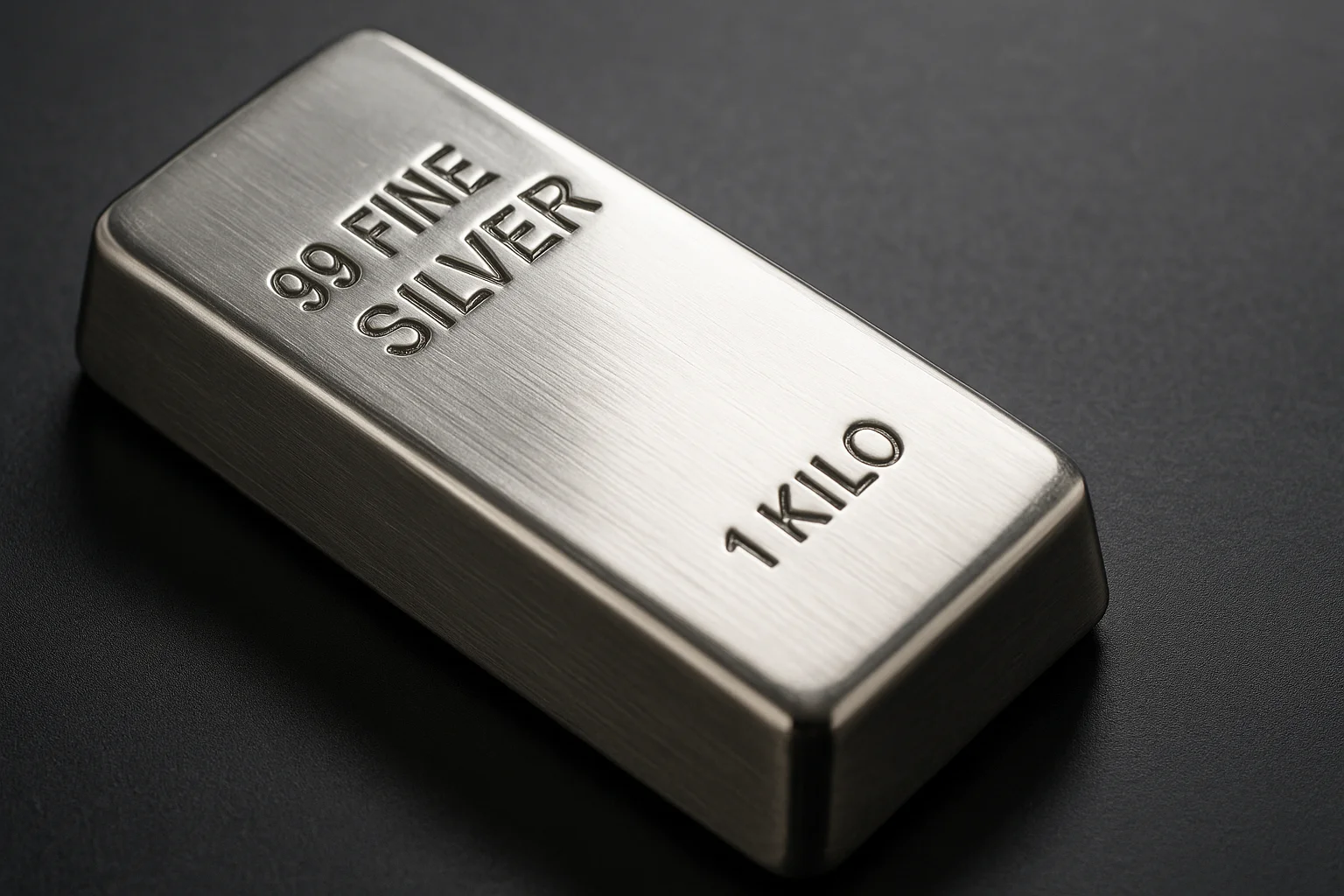Silver Price Prediction 2030: The Investor’s Metal for a Green Future
Silver has long been considered gold’s undervalued sibling, but its future potential is distinct and powerful. Unlike gold, which is primarily a store of wealth, silver is both an industrial workhorse and a precious investment asset.
Looking toward any silver price prediction 2030, this metal sits at the center of several global shifts: clean energy adoption, digital infrastructure, and inflationary pressure.
Historical Performance of Silver
Silver’s history is punctuated by sharp rallies and long periods of consolidation. The Hunt Brothers’ attempt to corner the market in 1980 drove prices to nearly $50 per ounce, only to collapse shortly after. In 2011, amid post-financial crisis stimulus and fears of inflation, silver again surged to just under $50.
However, unlike gold, silver has been more volatile, often retracing much of its gains in subsequent years. This volatility reflects its dual identity: both an industrial metal and a store of value.

Silver vs. Gold: The Ratio
One of the most useful metrics for investors is the gold-to-silver ratio, which measures how many ounces of silver are needed to buy one ounce of gold.
Historically, this ratio has hovered around 50 to 60. In recent years, it has spiked above 80 and even touched 120 in 2020 during pandemic volatility. A high ratio suggests silver is undervalued relative to gold. If the ratio reverts closer to historical norms, silver could outperform gold, making it a potentially superior investment for the 2020s.
Geographic Demand and Supply
Silver is a global commodity with production concentrated in a few regions. Mexico and Peru dominate global mining output, while China and Poland also contribute significantly.
On the demand side, the United States, China, and India are key players—driven by industrial consumption, solar manufacturing, and jewelry demand. Supply challenges in Latin America, where political and environmental regulations are tightening, could constrain future output.
Geopolitical Factors
Silver is not immune to global politics. Trade wars and tariffs can disrupt supply chains for electronics and solar industries, cutting into demand temporarily.
On the supply side, mining regulations and national policies in Latin America, particularly Mexico and Peru, have already slowed output.
Geopolitical instability often strengthens silver’s role as a “crisis hedge,” similar to gold. During periods of currency weakness, military conflict, or global uncertainty, investors often seek refuge in precious metals—silver included.
Silver Today: Affordable, Yet Strategic
Silver remains accessible for retail investors, trading at a fraction of gold’s price per ounce. Yet its uses extend far beyond coins and bars. More than half of all silver mined each year goes to industry, particularly electronics and renewable energy.
The Drivers Behind Silver’s 2030 Outlook
The Green Revolution
Silver is irreplaceable in solar panels due to its conductivity. Demand from photovoltaics alone is projected to exceed 300 million ounces annually by 2030.
Electric vehicles, smart grids, and battery technology all require significant silver inputs.
Supply Constraints
Unlike gold, most silver is mined as a byproduct of copper, lead, or zinc. This makes supply less responsive to higher prices.
Declining ore grades in Mexico, Peru, and China—the largest producers—could tighten global supply.
Inflation and Currency Pressures
Silver has historically been a hedge against inflation and currency devaluation.
A weakening U.S. dollar in the late 2020s could magnify global demand.
Investor Sentiment
Exchange-traded funds (ETFs) and futures markets can accelerate price moves. In a bullish cycle, silver’s volatility often outpaces gold, creating rapid gains.
Silver Price Scenarios for 2030
Scenario | Expected Price Range | Drivers |
Conservative | $60 – $75 per oz | Steady industrial growth, moderate inflation, no major supply shocks |
Moderate | $80 – $100 per oz | Strong renewable energy demand, tighter supply, softer dollar |
Bullish | $110 – $150+ per oz | Rapid green tech expansion, severe supply shortages, global currency debasement |
Investment Approaches
Physical Silver: Coins and bars offer tangible ownership. They hedge against systemic risk and require no third-party reliance.
Silver ETFs: Exchange-traded funds mirror silver prices and provide liquidity. They are efficient but lack the intrinsic satisfaction of holding metal.
Mining Equities: Silver miners can magnify gains during bull markets. However, they carry operational risks tied to costs, politics, and geology.
Rare Coins and Numismatics: Historic silver dollars (e.g., Peace and Morgan dollars) combine bullion value with collectible premiums, giving investors two avenues of appreciation.
Risks to Monitor
Technological substitution: If industries reduce silver usage per unit, demand growth could slow.
Economic downturns: Industrial demand may soften during recessions.
Central bank policies: High interest rates and a strong dollar can temporarily suppress silver prices.

Investment Strategies by Investor Type
Short-Term Traders often prefer futures and ETFs, where liquidity allows for rapid entry and exit. These instruments let traders capitalize on volatility but require careful timing.
Long-Term Investors lean toward physical silver—coins, bars, and rounds. These provide a tangible hedge against inflation and systemic risk, free from counterparty exposure.
Diversifiers balance bullion with mining equities. Mining stocks can multiply returns when silver rises, though they also carry operational and geopolitical risks. A blend of both physical silver and equities offers exposure to both stability and growth potential.
Numismatic Angle
Not all silver investments are purely bullion. Collectors often seek coins like the Morgan Dollar (1878–1921) and Peace Dollar (1921–1935). These coins hold intrinsic silver value but also carry premiums for historical and collectible reasons.
Unlike bullion bars, numismatic coins can rise in value even when silver prices stagnate. A rare variety or high-grade certified example may appreciate substantially, offering investors a “double layer” of protection: intrinsic metal worth plus collector demand.
Best-Case / Worst-Case Projections
Silver’s future hinges on the balance of demand growth and supply constraints. In a best-case scenario, solar demand soars, electric vehicle adoption accelerates, and mining output struggles to keep pace. Prices could climb well above $120 per ounce by 2030.
In a worst-case scenario, technological substitution reduces silver usage, global recession curtails industrial demand, and strong monetary policy keeps inflation tame. Under these conditions, silver could hover around $50–$60, limiting upside. Either way, silver’s volatility ensures it will remain one of the most dynamic metals for investors over the next decade.
Final Outlook
By 2030, silver is positioned to be one of the most dynamic investment assets of the decade.
In short: silver may finally step out of gold’s shadow and establish itself as the investment metal of the 21st century’s green economy.

